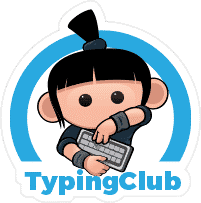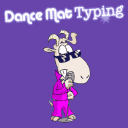Before students can begin to use the computer as an alternative to handwriting they need to have developed some keyboard fluency. There are many pieces of software to help children do this, but if you follow these 4 rules from the beginning it will make the whole process much easier:
- Rule 1 Use two hands on the keyboard where physically possible
- Rule 2 Use a rolling thumb action on the spacebar
- Rule 3 Use the shift key for capital letters rather than the caps lock key
- Rule 4 Press the space bar at the end of typing a word
You also need to consider whether you want to develop keyboard fluency or touch typing. Touch typing requires much more of an investment of time and effort. When selecting a programme it is also important to consider what type of learner the student is and what they will find motivating and engaging or demoralising.
It is important to encourage good posture at the computer from the start and to instil the habit of taking regular breaks. When typing make sure you are sitting up straight, your feet flat on the floor. Keep your elbows close to your body, your wrists straight and your forearms level. Using a slope for a laptop can sometimes be beneficial.
Starting out: Keyboard familiarity
 Letter Pop! www.helpkidzlearn.com Subscription. Wait for a letter to appear on the screen and find the same letter on the keyboard. If you can the on-screen letter will pop with a satisfying sound effect. Choose from lower case or capital letters. There are four colour schemes to choose from too, with high contrast options to suit users with visual impairments.
Letter Pop! www.helpkidzlearn.com Subscription. Wait for a letter to appear on the screen and find the same letter on the keyboard. If you can the on-screen letter will pop with a satisfying sound effect. Choose from lower case or capital letters. There are four colour schemes to choose from too, with high contrast options to suit users with visual impairments.
Free resources: Typing skills
 Typing Club https://www.typingclub.com/ Typing Club is an engaging and interactive touch typing learning experience. It demonstrates and encourages proper hand position and will show the correct hand posture on every key as you type. You can use it without an account or you can sign up to a free account in order to save any progress made. There is a version more suitable for younger children called Jungle Junior or one for older pupils called Typing Jungle. There are also stories that more advanced typists can type along to as well as one handed typing lesson plans.
Typing Club https://www.typingclub.com/ Typing Club is an engaging and interactive touch typing learning experience. It demonstrates and encourages proper hand position and will show the correct hand posture on every key as you type. You can use it without an account or you can sign up to a free account in order to save any progress made. There is a version more suitable for younger children called Jungle Junior or one for older pupils called Typing Jungle. There are also stories that more advanced typists can type along to as well as one handed typing lesson plans.
 Text Type www.doorwayonline.org.uk This is a collection of free learning activities provided by the Scottish Borders Council. Includes a typing programme with an introductory practice activity. This is particularly useful for KS2 and KS3.
Text Type www.doorwayonline.org.uk This is a collection of free learning activities provided by the Scottish Borders Council. Includes a typing programme with an introductory practice activity. This is particularly useful for KS2 and KS3.
Doorway Speller. There are some good spelling activities from First Sounds to Doorway Speller, each exercise has a range difficulty options. Spelling activities are good typing practice!
 Big Brown Bear www.bigbrownbear.co.uk Four keyboard/typing activities. There are also supporting literacy activities including magnetic letters (and numbers) and phoneme jigsaws.
Big Brown Bear www.bigbrownbear.co.uk Four keyboard/typing activities. There are also supporting literacy activities including magnetic letters (and numbers) and phoneme jigsaws.
 Dance Mat www.bbc.co.uk/schools/typing An introduction to touch typing aimed at children in KS1/LKS2. It comprises of 4 levels which are divided into 3 stages. Begin at Level 1 and build up your skills gradually through to Level 4. There are worksheets to practise typing the words in a word processing programme.
Dance Mat www.bbc.co.uk/schools/typing An introduction to touch typing aimed at children in KS1/LKS2. It comprises of 4 levels which are divided into 3 stages. Begin at Level 1 and build up your skills gradually through to Level 4. There are worksheets to practise typing the words in a word processing programme.
Resources
- Choosing the Right Keyboard – Information on the different types of keyboard available
- Record of Typing Intervention – Advice on how to implement a typing intervention
- Using a Typing Tutor – Text Type – A brief guide on using the Text Type resource
- Using a Typing Tutor – Typing Club – A brief guide on using the Typing Club resource